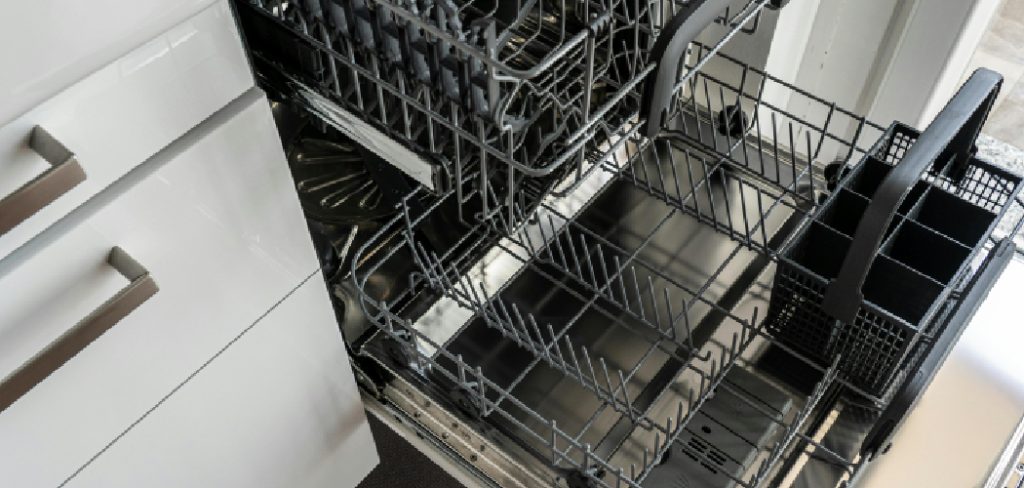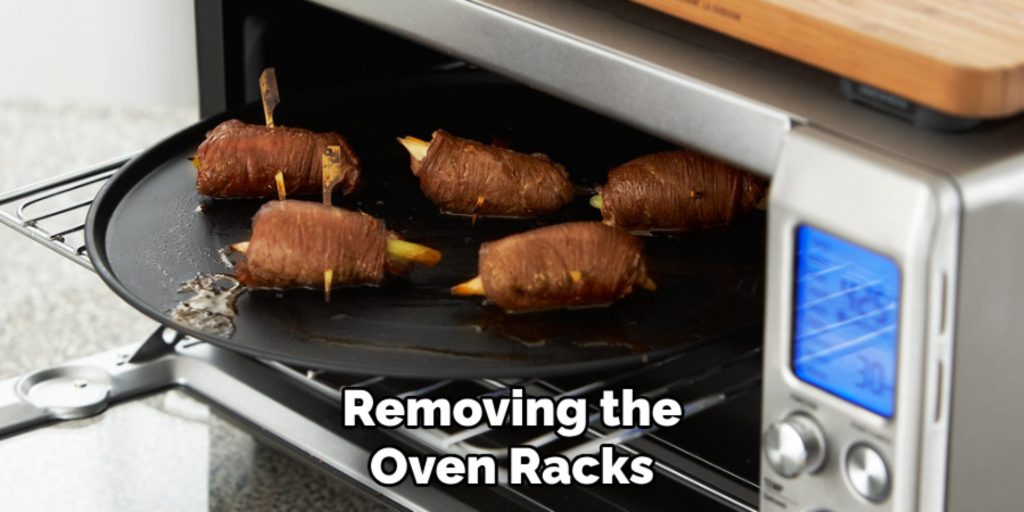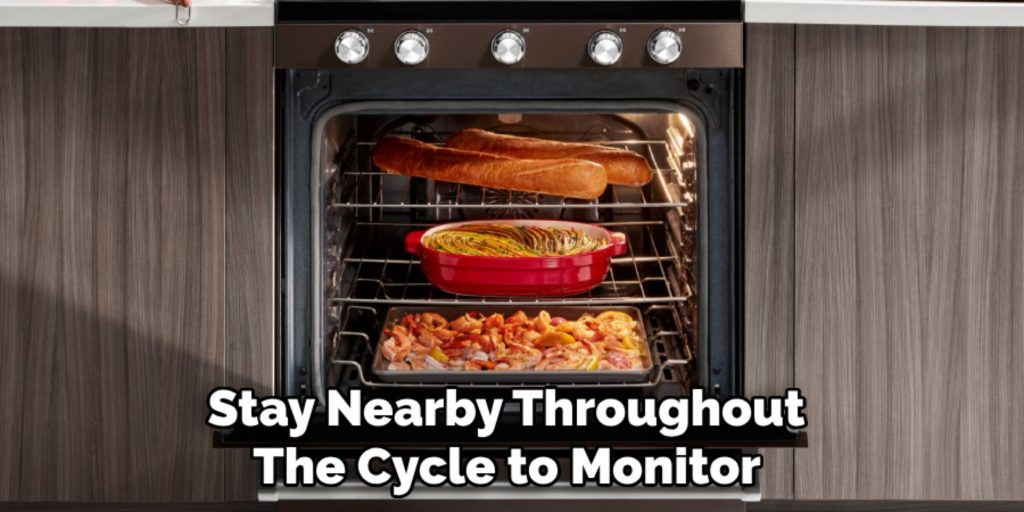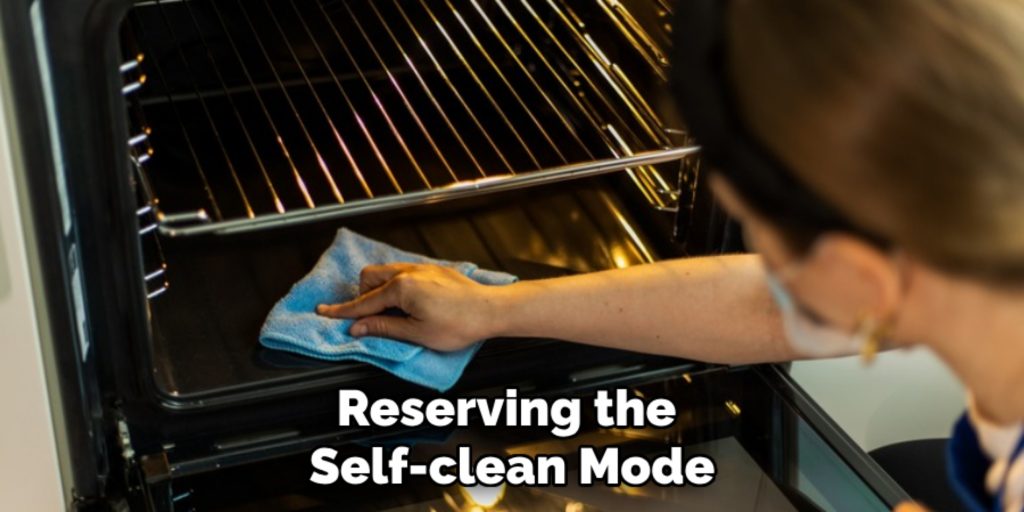IFB ovens are renowned for their advanced technology and user-friendly features, making them a preferred choice for modern kitchens. Among their many innovative designs is the self-clean function, which ensures hassle-free maintenance while enhancing your culinary experience.

The self-clean feature is specifically designed to simplify oven cleaning. Using exceptionally high temperatures, it effectively incinerates food residue and grease into ash, which can then be easily wiped away.
This article aims to provide a comprehensive guide on how to use self clean on IFB oven, illustrating every step from preparation to post-cleaning care. By following these straightforward instructions, users can maintain their ovens in prime condition, ensuring peak performance for years to come.
Understanding the Self-Clean Function
1. How Self-Clean Works
The self-clean function in an IFB oven operates by elevating the internal temperature to approximately 900°F (482°C). This intense heat incinerates any food residue, grease, and spills inside the oven, reducing them to fine ash.
This is achieved through a cycle that typically lasts between 2 to 4 hours, depending on the specific model and settings selected. During this period, the oven door remains locked to ensure safety and to maintain the high temperatures necessary for effective cleaning.
Once the cycle is complete and the oven has cooled down, the door unlocks, allowing you to wipe away the remaining ash easily. This automated process simplifies upkeep and helps maintain the appliance’s efficiency over time.
2. Safety Precautions
Before initiating the self-clean cycle, ensure all items, including racks, trays, and any food remnants, are removed from the oven. Leaving objects inside can lead to discoloration or damage due to the high temperatures
Venturing the kitchen during self-cleaning is crucial, as the intense heat can generate smoke and unpleasant odors. Opening windows or using a kitchen vent fan can help circulate air and mitigate any discomfort from the smoke.
Additionally, refrain from leaving the area entirely unattended to quickly address any issues that might arise, such as excessive smoke or unusual noises. By following these safety measures, you can use the self-clean feature confidently while ensuring the safety of your household and the longevity of your appliance.
Preparing the Oven for Self-Clean Mode
1. Remove Oven Racks and Accessories
- Step 1: Begin by removing the oven racks and other accessories from your IFB oven’s interior. This step is crucial to prevent discoloration and potential warping of these items due to the high temperatures reached during self-cleaning. The extreme heat can cause permanent damage to both the finish and functionality of the racks, so it is best to keep them out during this cycle.
- Step 2: While the oven is busy with the self-clean cycle, take the opportunity to clean the racks separately. Place them in a basin filled with warm, soapy water to soak. This will help to loosen any baked-on grime or grease. After a thorough soak, use a non-abrasive scrubber to gently clean the racks, ensuring they are thoroughly rinsed and dried before reinserting them into your oven post-cleaning.

2. Wipe Down Excess Debris
- Step 1: Before initiating the self-clean mode, it is important to handle any large spills or food debris inside the oven. Use a damp cloth to gently wipe down remnants of any significant residues that might have accumulated. This proactive step is essential because excessive food debris can create overwhelming smoke during the cleaning cycle, leading to an uncomfortable kitchen environment and setting off smoke alarms.
- Step 2: After removing most large debris, ensure the oven interior is dry. This ensures that the self-clean cycle operates effectively and minimizes any further steam or smoke generation. Double-check corners and crevices to ensure even the smallest particles are addressed. Properly preparing the oven in this way not only leads to better results but also contributes to the longevity of your appliance.
3. Locking the Oven Door
- Step 1: Depending on your specific IFB oven model, you might need to manually lock the oven door before activating the self-clean cycle. Check your user manual for specific instructions related to your model. For ovens that do not automatically lock, locate the locking mechanism and engage it securely. This will ensure that the oven remains sealed and the extreme heat is contained.
- Step 2: Once the self-clean cycle begins, the oven door will remain locked for the duration of the process. This important safety feature is designed to prevent accidental contact with the intense heat within. The lock will typically stay engaged until the oven has cooled down to a safe temperature. This precaution protects you and any nearby individuals from burns and ensures that an inadvertently opened door doesn’t interrupt the cleaning process.
How to Use Self Clean on IFB Oven: Running the Self-Clean Cycle
1. Selecting the Self-Clean Mode
- Step 1: Begin the cleaning process by pressing the “Self-Clean” button or selecting the self-clean option from your oven’s control panel. This action initiates the cleansing cycle designed to restore your oven to pristine condition.
- Step 2: Choose the desired cleaning duration, typically 2 to 4 hours, depending on the accumulated dirt and grime level. A shorter cycle might suffice for minimal residue, whereas heavier build-up may require a full 4-hour session to ensure thorough cleaning.
- Step 3: Press “Start” to engage the self-clean cycle. At this point, the oven will automatically lock if it hasn’t been previously locked manually. This lock is essential for safety, containing the high temperature necessary to turn debris into ash while preventing accidental contact or interruptions.
2. Monitoring the Self-Clean Process
- Step 1: It is advisable to stay nearby throughout the cycle to monitor for any excessive smoke or unusual noises. While some level of smoke is expected as residues are incinerated, an abnormal amount might indicate a problem, such as an overlooked large spill.

- Step 2: The oven will gradually cool down once the self-clean cycle completes. The lock on the door will disengage only when the internal temperature returns to a safe level. This automatic unlocking ensures that you can open the door without risk, marking the end of the cleaning process and allowing you to access the oven interior.
3. Ventilating the Kitchen
- Step 1: During the self-clean cycle, it’s crucial to ventilate the kitchen effectively. Open windows or activate a kitchen vent to circulate air, especially if smoke becomes noticeable. This action improves air quality and minimizes exposure to any lingering odors.
- Step 2: Avoid relying on air conditioning to clear smoke, as it may not facilitate air exchange efficiently and can contribute to heat buildup in the kitchen. Allowing natural airflow or using fans can expedite the dissipation of smoke, ensuring a comfortable and safe environment as the self-clean procedure progresses.
Post-Cleaning Care
1. Wiping Down Ash Residue
- Step 1: After the oven has cooled, open the door and use a damp cloth to wipe away the ash that has collected on the oven floor. This ensures that the interior is clean and ready for your next culinary endeavor.
- Step 2: Avoid using harsh chemicals or abrasive scrubbers, as these can damage the oven’s finish. A gentle approach will maintain the appliance’s surface integrity and ensure its longevity.
2. Replacing the Oven Racks
- Step 1: Once the cleaning is complete and the interior is wiped clean, replace the oven racks and any other accessories you removed earlier. Ensure they are correctly positioned to support even heating and cooking.
- Step 2: Carefully align each rack in its respective groove, ensuring stability during future use. With your IFB oven now fully cleaned and prepared, you can bake, roast, or broil confidently.
Troubleshooting Common Issues
1. Excessive Smoke During Self-Clean
If you experience excessive smoke during the self-clean cycle, you should immediately stop cleaning. Once the oven cools, open the door to inspect for overlooked large debris. It’s also advisable to properly ventilate the kitchen by opening windows or using fans. Before restarting the cycle, thoroughly remove any remaining residue. These steps help prevent similar issues and maintain optimal air quality during future cleaning cycles.
2. Door Not Unlocking
If the oven door remains locked after the cycle, first confirm that the oven has completely cooled. The lock mechanism is designed to release only once a safe temperature is achieved. If the door does not unlock after cooling, consult your user manual for specific reset instructions for your model. Some ovens may have a manual release function or require a simple power cycle to reset and resolve the issue.

Safety Tips for Self-Clean Mode
1. Avoid Leaving the Oven Unattended
Keeping a close watch on your oven during the self-clean process is crucial, particularly during the initial hours. This precaution helps ensure that no issues arise, such as overheating or excessive smoke, which could signal a problem that needs immediate attention. By staying alert and nearby, you can quickly address any unexpected occurrences and maintain a safe cleaning environment, preventing potential hazards before they escalate.
2. Use Self-Clean Sparingly
Using the self-clean feature sparingly is advisable because frequent utilization can exert stress on the oven’s components, potentially leading to premature wear and reducing the appliance’s lifespan. Consider alternative methods like manual cleaning for minor spills and stains for routine cleanup needs. Reserving the self-clean mode for occasional deep cleaning can help preserve your oven’s functionality and prolong its service life, ensuring it operates optimally for years to come.

Conclusion
In conclusion, knowing how to use self clean on IFB oven effectively ensures your appliance remains pristine, safe, and efficient. Begin by preparing the oven, removing racks, and setting the self-clean duration based on the level of dirt. Engage the self-clean cycle and stay vigilant for excessive smoke, ensuring proper kitchen ventilation throughout. ‘
\Once the cycle concludes and the oven has cooled, wipe away ash residue and replace the racks. Address common troubleshooting issues like excessive smoke and door unlocking problems following the steps outlined. Consider these final tips for optimal results: adhere to safety precautions, employ the self-clean function sparingly, and maintain regular cleaning routines.
By following these guidelines and caring for your oven, you can enjoy improved cooking performance and extend the appliance’s lifespan, leading to consistently better results in the kitchen.
Professional Focus
Angela Ervin, a former interior designer turned blogger, specializes in kitchen design and renovations. Through her website, she blends her passion for cooking with design expertise, sharing practical and creative ideas. Known for balancing functionality and beauty, Angela’s insightful content has made her a trusted voice in home design and lifestyle.
About the Author
Angela Ervin, an experienced interior designer and blogger, combines her passion for kitchen renovations with storytelling. Living in Petersburg with her family, she enjoys cooking and testing her projects firsthand. Known for her humor and relatable style, Angela shares creative, functional design insights through her content, making her a trusted voice in home design.
Education History
University: Virginia Commonwealth University
Degree: Bachelor of Fine Arts (BFA) in Interior Design
- Angela’s education at VCU focused on mastering core interior design principles, including spatial planning, color theory, materials selection, and sustainable design practices.
- She gained hands-on experience through studio projects and collaborative design exercises, which honed her ability to create functional and aesthetically pleasing environments.
- Her coursework also emphasized problem-solving and practical applications of design, preparing her for real-world projects like her self-directed kitchen renovations.
- The program’s strong foundation in both technical skills and creative expression shaped Angela’s ability to seamlessly integrate form and function in her work.


